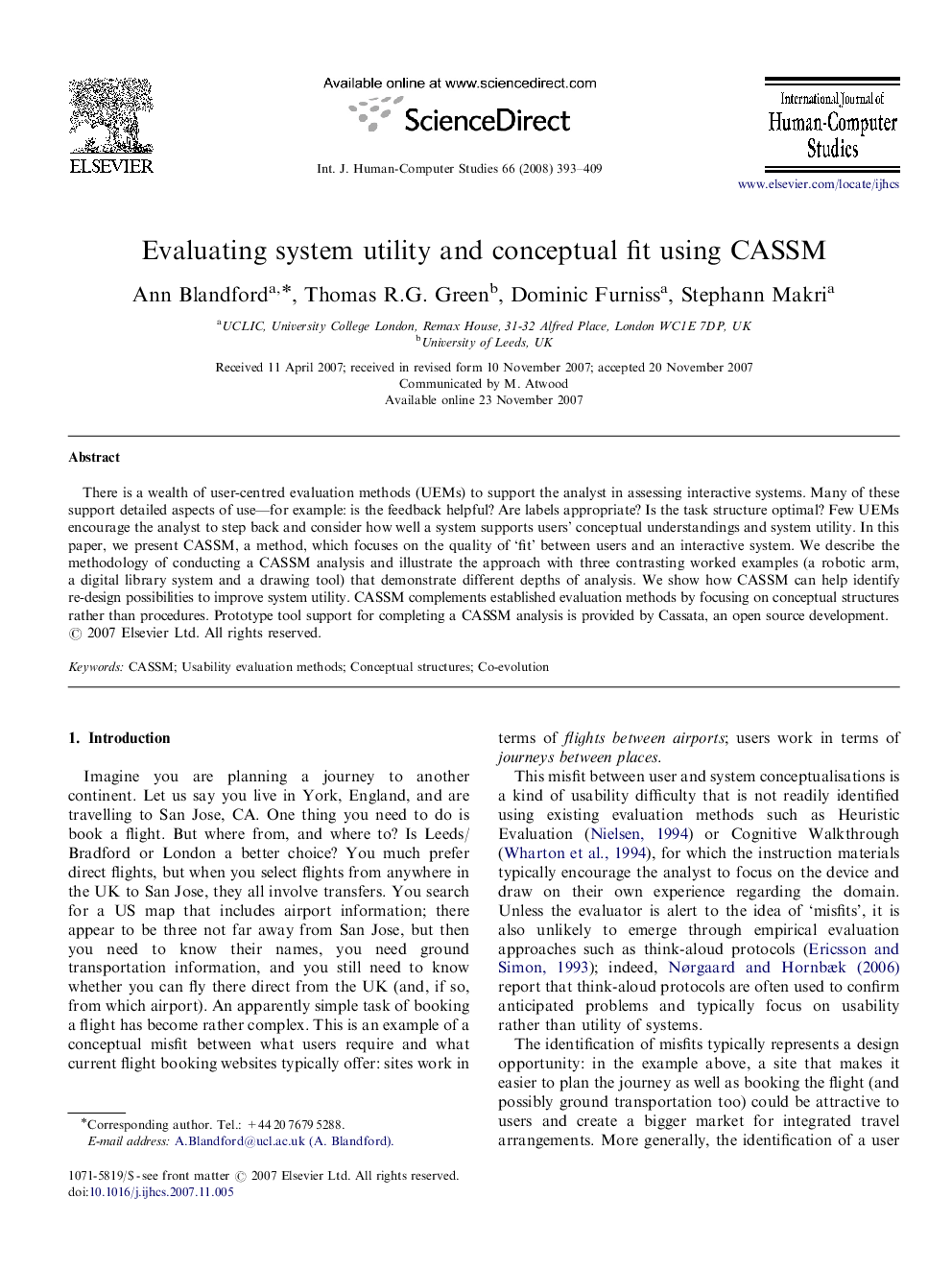| Article ID | Journal | Published Year | Pages | File Type |
|---|---|---|---|---|
| 402090 | International Journal of Human-Computer Studies | 2008 | 17 Pages |
There is a wealth of user-centred evaluation methods (UEMs) to support the analyst in assessing interactive systems. Many of these support detailed aspects of use—for example: is the feedback helpful? Are labels appropriate? Is the task structure optimal? Few UEMs encourage the analyst to step back and consider how well a system supports users’ conceptual understandings and system utility. In this paper, we present CASSM, a method, which focuses on the quality of ‘fit’ between users and an interactive system. We describe the methodology of conducting a CASSM analysis and illustrate the approach with three contrasting worked examples (a robotic arm, a digital library system and a drawing tool) that demonstrate different depths of analysis. We show how CASSM can help identify re-design possibilities to improve system utility. CASSM complements established evaluation methods by focusing on conceptual structures rather than procedures. Prototype tool support for completing a CASSM analysis is provided by Cassata, an open source development.
